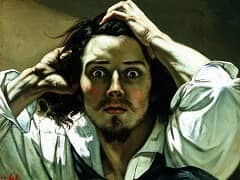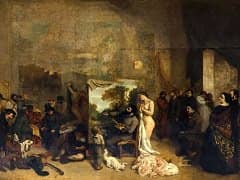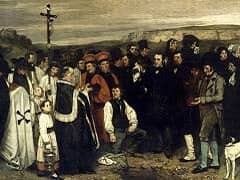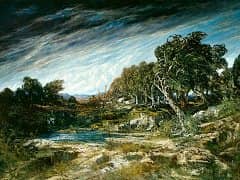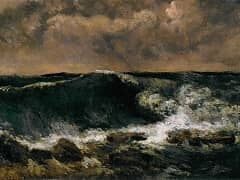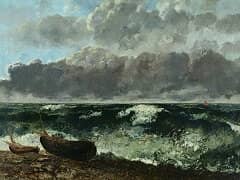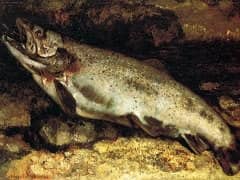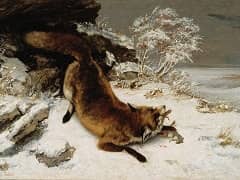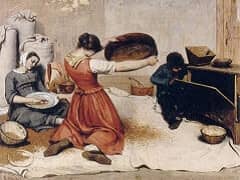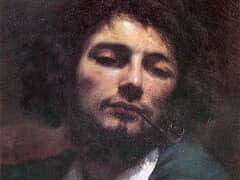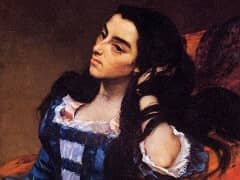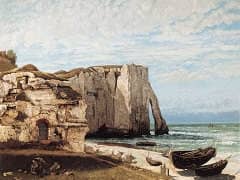Dressing the Dead Girl, 1850's by Gustave Courbet
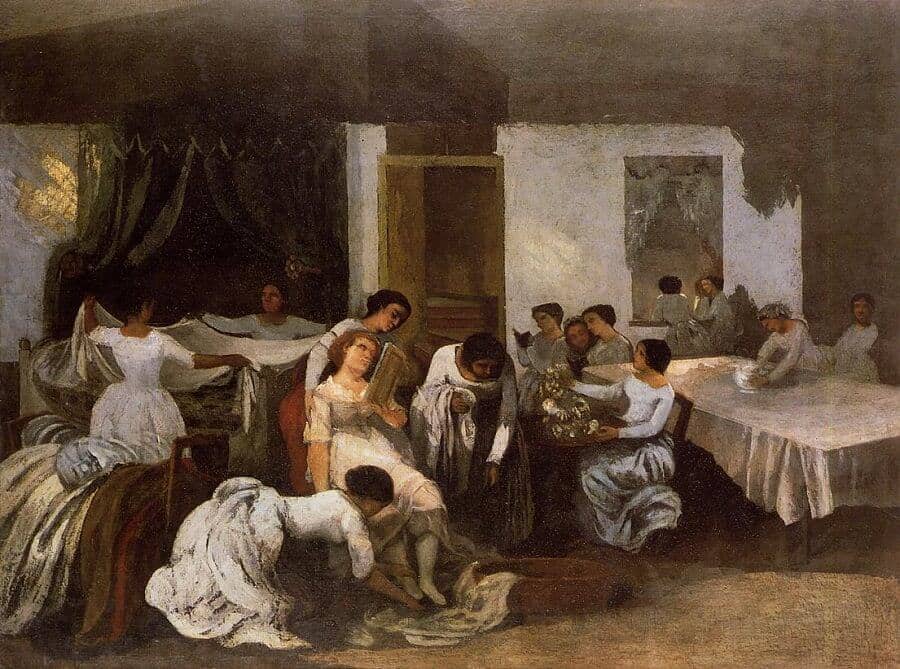
When this large unfinished canvas first came to public attention in the 1920s, it bore the title La Toilette de la Mariee, Dressing the Bride. Later studies, based on documents and on the painting itself, have persuasively demonstrated that the scene is not one of preparation for a marriage but for a wake. Crucial to this radical change in interpretation was the radiographic examination of the central figure, the young woman seated in the chair being tended by her companions. This revealed a nude figure, both arms hanging down, her head leaning against her left shoulder. The awkwardness of the overpainting makes it highly probable that this change was made not by the artist but by another hand at a later date, to permit the painting to be given a more cheerful theme for the sake of the market. That the painting should be concerned with the rituals of death rather than of marriage is also borne out by some of the activities portrayed, such as washing the young woman's feet and the concentration of the group in the background on their prayerbooks.
Even though incomplete, the painting takes its place in the series of what the painter calls "tableaux de moeurs de campagne." In that series Courbet specifically mentions The Grain Sifters and The Young Ladies of the Village, both of which are also concerned with rural customs enacted by the local women of Ornans, his sisters and others. It is worth noting that all three of these paintings - and one could add a fourth, that of the spinner interrupted at her task of spinning by sleep - take as their subject the activities of women. Considering the size of the painting, it was doubtless originally intended as a Salon picture which would expand Courbet's Realist project of elevating themes of provincial life to the status of serious art. It is not known why the painting was left unfinished. Impressive, however, is the powerful atmosphere created even in this state. It is a painting that commands attention at a great distance, by its somber tonality, its strong planar construction, and the dignity of the figures as they are woven through the somewhat ambiguous space. The work reveals both the artist's traditional method of building the canvas up from light to dark, and his very unacademic method of constructing form by drawing with color and tone, establishing the basic character and feeling of the painting from the early stages.

